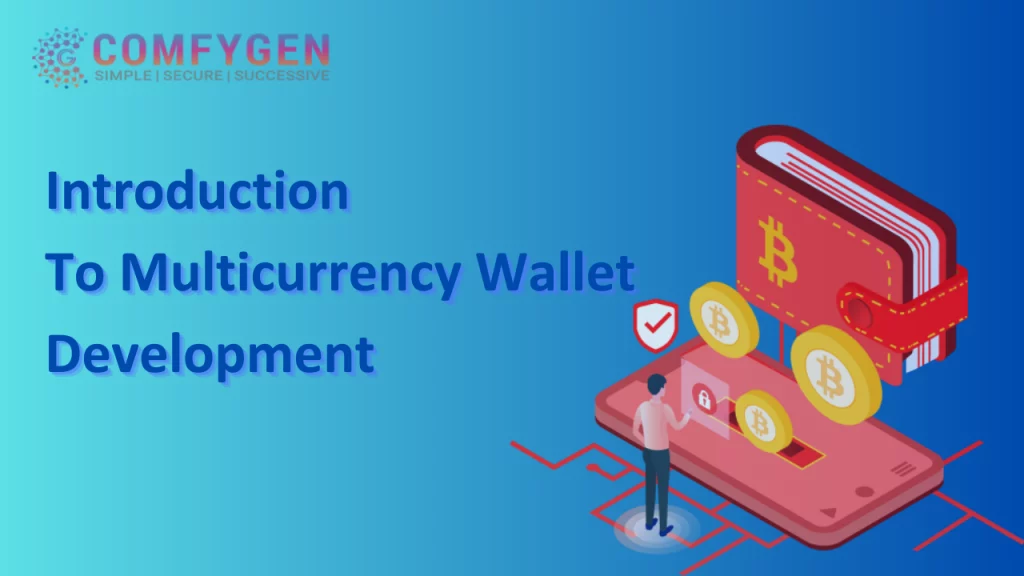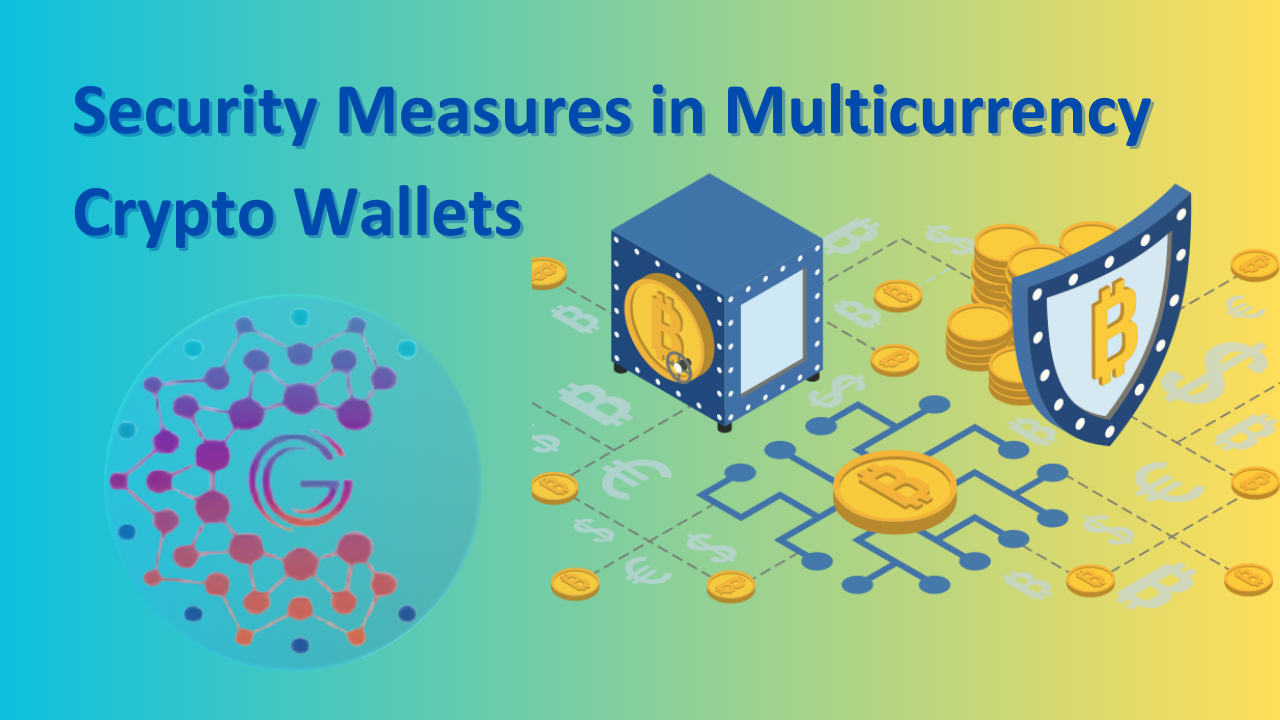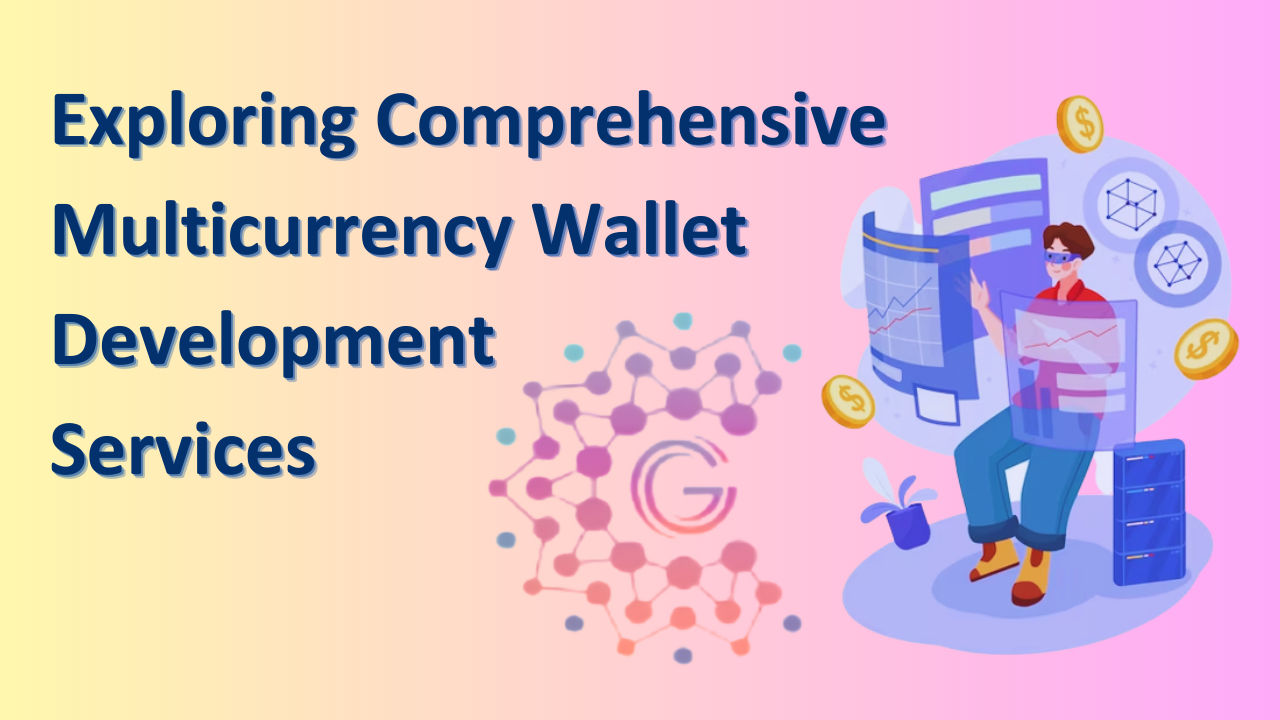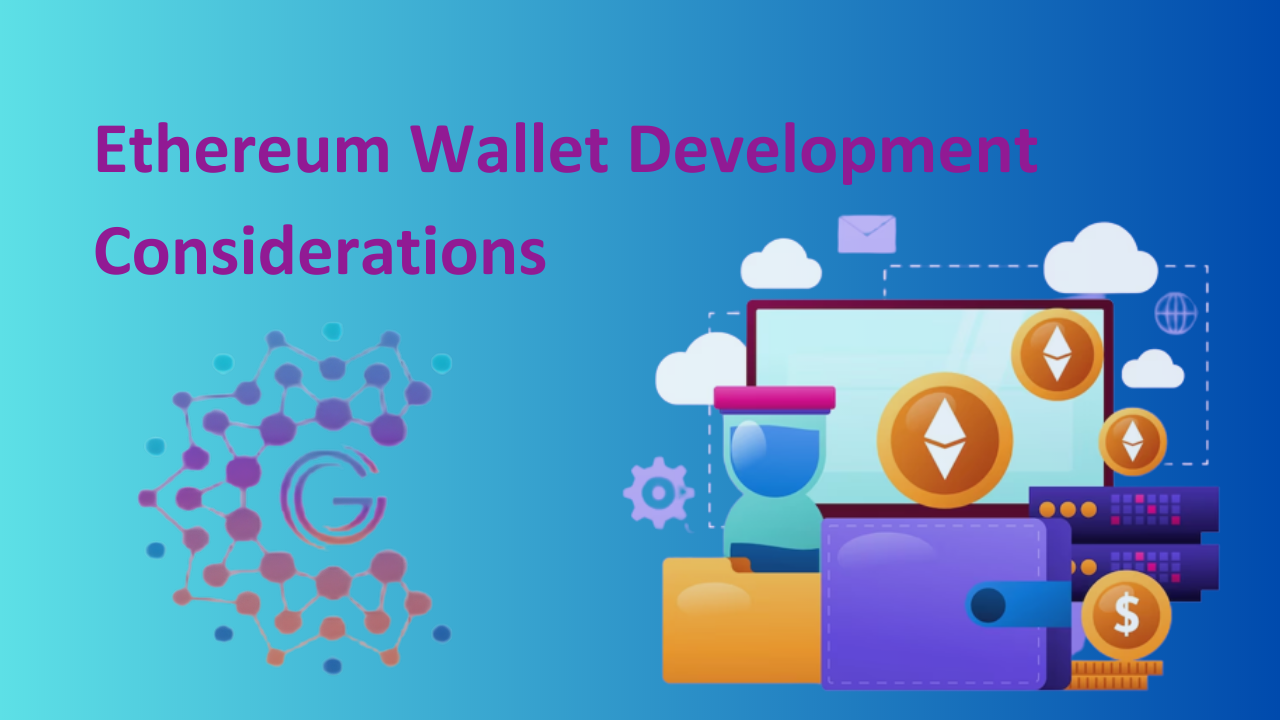Multicurrency wallet development offers a comprehensive solution for effectively managing a diverse array of digital assets. By integrating various cryptocurrencies and tokens into a single platform, users can seamlessly store, send, receive, and monitor their holdings. This solution not only enhances convenience but also ensures security through robust encryption and authentication mechanisms. Through user-friendly interfaces and advanced features, such as real-time market updates and portfolio tracking, individuals and businesses can make informed decisions. Moreover, the wallet’s compatibility across different platforms, including mobile and desktop devices, guarantees accessibility and flexibility. Ultimately, multicurrency wallet development empowers users to navigate the complexities of the digital asset landscape with ease, fostering efficient asset management and transactions within the evolving realm of decentralized finance.
Introduction to Multicurrency Wallet Development

In the fast-evolving landscape of blockchain and cryptocurrencies, the need for secure and user-friendly cryptocurrency wallet has become increasingly significant. Multicurrency wallets have revolutionized the way we manage our digital assets. With the advent of cryptocurrencies, individuals are now using multiple digital currencies for various purposes, and a multicurrency wallet serves as a one-stop solution for securely storing and managing these diverse digital assets. A multicurrency wallet development involves creating a software application or platform that can accommodate and support different types of cryptocurrencies. It allows users to store, send, receive, and exchange their digital currencies in a convenient and intuitive manner. The development process involves implementing robust security measures to protect the users assets, including encryption, multi-factor authentication, and cold storage options. Additionally, features such as real-time market updates, transaction history, and user-friendly interfaces are often incorporated to enhance the user experience. The demand for multicurrency wallets has surged with the increasing adoption of cryptocurrencies and the need for a seamless and secure storage solution. As the cryptocurrency market continues to expand, the development of multicurrency wallets becomes even more critical, enabling users to efficiently manage their diverse digital assets in a single platform.
Definition and Purpose of Crypto Wallets
A cryptocurrency wallet can be thought of as a digital equivalent of a physical wallet. However, instead of holding traditional currency like banknotes and coins, a crypto wallet stores cryptographic keys that enable users to access and manage their cryptocurrencies on the MultiChain Blockchain. These keys include a public key, which is used to receive funds, and a private key, which is used to sign transactions and access the stored cryptocurrencies.
The primary purpose of a crypto wallet is to provide a secure and convenient means for users to store, send, and receive cryptocurrencies. Wallets come in various forms, including MLM Software wallets (desktop, mobile, or web-based), hardware wallets (physical devices), and paper wallets (printed keys). Each type offers a different balance between security and accessibility.
Glance Here: How Much Does it Cost to Create Crypto MLM Software with Smart Contract?
Benefits of Using Multicurrency Crypto Wallets
The emergence of numerous cryptocurrencies with distinct features and use cases has led to a growing demand for wallets that can support multiple currencies. Here are some key benefits of using multicurrency crypto wallets:
- Diversification: Cryptocurrency investors often hold a variety of assets to diversify their portfolios. A multicurrency wallet allows users to manage their diverse holdings from a single interface, simplifying asset tracking and management.
- Convenience: Instead of juggling multiple wallets for different cryptocurrencies, users can consolidate their holdings in a single multicurrency wallet. This streamlines the user experience and reduces the need to remember multiple private keys and addresses.
- Cost Savings: Transacting between different cryptocurrencies can sometimes incur fees. With a multicurrency wallet, users can potentially save on transaction costs by directly exchanging or transacting between supported currencies within the wallet.
- User-Friendly Interfaces: Multicurrency wallets aim to provide intuitive interfaces that make it easy for both beginners and experienced users to navigate and manage their holdings. This user-friendliness contributes to the broader adoption of cryptocurrencies.
- Interoperability: As blockchain technology evolves, interoperability between different blockchain networks becomes increasingly important. Multicurrency wallets can facilitate seamless interaction between various blockchain ecosystems, enabling users to take advantage of cross-chain functionalities.
Overview of Ethereum Wallet Development
Ethereum, a pioneering blockchain platform, not only introduced the concept of smart contracts mlm software but also enabled the creation of decentralized applications (DApps). Consequently, Ethereum wallet development plays a pivotal role in enabling users to interact with these DApps and manage their Ether (ETH) and ERC-20 tokens.
Key Features of a Multicurrency Crypto Wallet

In the dynamic world of cryptocurrency, the development of multicurrency wallets has become increasingly essential to cater to the diverse needs of users who hold multiple cryptocurrencies. These wallets offer a comprehensive solution for managing various digital assets in a secure, efficient, and user-friendly manner. Let’s delve into the key features that make up a robust multicurrency crypto wallet:
Support for Multiple Cryptocurrencies, Including Ethereum
At the core of a multicurrency wallet is its ability to support a wide range of cryptocurrencies, including the most popular ones like Bitcoin, Ethereum, and other altcoin creation services. Ethereum, with its vibrant ecosystem of tokens and decentralized applications (DApps), is a significant inclusion in such wallets. Supporting Ethereum and its Solana Token enables users to participate in various blockchain-based activities and access the full spectrum of financial tools.
Secure Private Key Management and Wallet Recovery
Security is paramount in the cryptocurrency realm. A multicurrency wallet must implement robust private key management practices to safeguard user funds. Private keys should be encrypted and stored securely on the user’s device or, preferably, on a hardware security module (HSM) for added protection. Additionally, the wallet should offer wallet recovery mechanisms, such as seed phrases or recovery keys, to allow users to regain access to their funds in the event of device loss or failure.
Transaction Tracking and History
Transaction history is crucial for users to monitor their financial activities accurately. The wallet should provide an easily accessible transaction history that displays details such as transaction amounts, sender and recipient addresses, timestamps, and confirmations. This feature ensures transparency and enables users to verify the status of their transactions on the blockchain.
Integration with Ethereum Network and Smart Contracts
Given Ethereum’s prominence in the blockchain space, a multicurrency wallet should seamlessly integrate with the Ethereum network. This integration allows users to send Ether, interact with smart contracts, participate in Tron Token sales, and engage with DApps directly from within the wallet interface. Users can also view their Ethereum account balance and monitor incoming and outgoing transactions.
QR Code Scanning for Convenient Transactions
To simplify the process of sending and receiving cryptocurrencies, the wallet should support QR code scanning. Users can generate QR codes for their wallet addresses, making it convenient for others to scan and initiate transactions without the need to manually enter complex addresses. Similarly, users can scan QR codes to quickly receive funds or confirm transactions.
Multi-factor Authentication for Enhanced Security
Incorporating multi-factor authentication (MFA) adds an additional layer of security to the wallet. By requiring users to provide a second form of authentication, such as a one-time password (OTP) or biometric authentication, the wallet reduces the risk of unauthorized access, even if the user’s private key is compromised.
Real-time Market Data and Price Tracking
For users who closely follow the cryptocurrency market, real-time market data and price tracking within the wallet can be invaluable. By integrating with reliable market data sources, the wallet can display live price updates, historical price charts, and other relevant market metrics. This feature empowers users to make informed decisions about buying, selling, or holding their cryptocurrencies.
In-wallet Crypto Swapping, Including Ethereum Tokens
Enabling users to exchange one cryptocurrency for another directly within the wallet interface simplifies the process of managing a diverse portfolio. This feature, often referred to as “crypto swapping,” allows users to convert one cryptocurrency into another without the need for external exchanges. For Ethereum-based wallets, this includes the ability to swap various Ethereum token seamlessly.
Cross-device Synchronization and Accessibility
In today’s connected world, users expect their data and assets to be accessible across multiple devices. A multicurrency wallet should offer cross-device synchronization, ensuring that users can seamlessly transition between their desktop, mobile, and web-based wallets while maintaining access to their funds and transaction history.
User-friendly Interface and Intuitive Navigation
Last but not least, a user-friendly interface is essential for widespread adoption. The wallet’s design should prioritize intuitive navigation, clear labeling of features, and a layout that guides users through their cryptocurrency management journey. A well-designed interface reduces the learning curve for newcomers and enhances the overall user experience.
Security Measures in Multicurrency Crypto Wallets

Security is paramount in the world of cryptocurrencies, where the decentralized and irreversible nature of transactions necessitates robust protection against potential threats. Multicurrency crypto wallets house valuable assets, making them prime targets for malicious actors. To ensure the safety of user funds and information, wallets must implement a comprehensive set of security measures. Let’s explore these security measures in detail:
Secure Storage and Backup of Private Keys
Private keys are the linchpin of wallet security. They grant access to cryptocurrency holdings, making them a prime target for hackers. Multicurrency wallets must employ secure storage mechanisms for private keys, such as encryption and hardware security modules (HSMs). Encryption ensures that even if a hacker gains access to the private keys, they remain indecipherable without the appropriate decryption key.
Furthermore, users should be encouraged to create secure backups of their private keys. Wallets often provide users with seed phrases (mnemonic phrases) as a means of recovery. These phrases are a series of words that, when properly safeguarded, can restore access to the wallet if the original device is lost or compromised. Educating users about the importance of securely storing these backup phrases is essential.
Two-factor Authentication (2FA) and Biometric Security
Two-factor authentication (2FA) adds an additional layer of security by requiring users to provide a second form of verification in addition to their password or PIN. This can involve receiving a one-time code on a separate device or via email. By requiring multiple forms of authentication, the wallet significantly reduces the risk of unauthorized access, even if a user’s password is compromised.
Biometric security, such as fingerprint or facial recognition, further enhances user authentication. These biometric features provide a convenient yet secure way for users to access their wallets while reducing the risk of password-related vulnerabilities.
Address Whitelisting and Transaction Limits
Address whitelisting is a preventive measure that restricts transactions to specific pre-approved addresses. This feature adds an extra layer of protection against unauthorized withdrawals, ensuring that only whitelisted addresses can receive funds from the wallet. This can be particularly useful for users who want to minimize the risk of accidental or fraudulent transfers.
Transaction limits are another security feature that prevents large or unusual transactions from being executed without additional verification steps. Users can set thresholds for transaction amounts, and any transaction exceeding those limits would require further confirmation, such as 2FA or a biometric scan.
Compliance with Security Standards and Best Practices
Adhering to established security standards and best practices is crucial for maintaining a high level of security in multicurrency wallets. These standards encompass various aspects of wallet development and operation, including encryption, data protection, and vulnerability management. Some of the prominent security standards include ISO 27001, ISO 27002, and OWASP (Open Web Application Security Project) guidelines.
Wallet developers should continuously monitor and assess potential vulnerabilities, conducting regular security audits and penetration testing. This proactive approach helps identify and address security weaknesses before they can be exploited by malicious actors.
User Education and Awareness
While technical measures are essential, user education and awareness play a pivotal role in overall wallet security. Users should be informed about best practices, potential threats, and how to recognize phishing attempts. They should also be cautioned against sharing private keys or sensitive information with anyone and encouraged to use only official wallet apps and platforms.
Wallet providers can also integrate educational resources directly into their interfaces. This could include pop-up reminders about security measures, guides on safe practices, and notifications about potential security risks.
Exploring Comprehensive Multicurrency Wallet Development Services

In the ever-expanding realm of cryptocurrencies, the demand for secure and user-friendly solutions to manage multiple digital assets has grown significantly. Multicurrency wallet development services offer a comprehensive suite of offerings that cater to the diverse needs of users, from consultation to deployment. Let’s delve into the various facets of these services:
-
Multicurrency Wallet Consulting
The journey of developing a multicurrency wallet begins with strategic consultation. Multicurrency wallet consulting services provide valuable insights and guidance to clients looking to create effective wallet solutions. Expert consultants with in-depth knowledge of blockchain technology and cryptocurrency ecosystems collaborate with clients to define their specific needs, goals, and target user base.
During the consulting phase, key aspects such as platform selection (web, mobile, desktop), security features, supported cryptocurrencies, user experience, and regulatory compliance are discussed. Consultants assist clients in making informed decisions that align with their business objectives and the expectations of their user base.
-
Development Of Multicurrency Wallets
The heart of the service offering lies in the development of the multicurrency wallet itself. This phase involves translating the strategic insights gathered during the consultation into a functional and secure wallet application. Here are some key elements of the development process:
- Platform Choice: Depending on the intended user base and use cases, the development team chooses the appropriate platforms for the wallet – web, mobile (iOS, Android), or desktop. This ensures that users can access the wallet on their preferred devices.
- Cryptocurrency Integration: Integrating multiple cryptocurrencies, including major players like Bitcoin, Ethereum, and a variety of altcoins, forms the core functionality of a multicurrency wallet. This involves connecting the wallet to various blockchain networks, implementing address generation, transaction processing, and balance tracking.
- Security Implementation: Robust security measures are paramount in wallet development. This includes encryption of private keys, secure storage, and backup mechanisms, as well as the incorporation of two-factor authentication (2FA) and biometric security features.
- User Interface and Experience: A user-friendly interface is essential for adoption. Designing an intuitive and visually appealing interface ensures that users can easily navigate the wallet’s features, check balances, view transaction histories, and manage their assets seamlessly.
- Smart Contract Integration: For Ethereum-based wallets, integration with smart contracts and decentralized applications (DApps) is crucial. This enables users to interact with various blockchain-based functionalities directly within the wallet.
-
Deployment
Once the multicurrency wallet is developed, the deployment phase involves making the wallet accessible to users. This can include publishing the wallet on app stores, hosting web-based versions on secure servers, and distributing desktop versions through official channels. The deployment also involves configuring server infrastructure, load balancing, and ensuring high availability to accommodate user demand.
Security remains a priority even during the deployment phase, with continuous monitoring and updates to address any vulnerabilities that may arise.
-
Token Mining and Encryption
In the context of multicurrency wallet development, token mining and encryption are two essential components:
- Token Mining: Token mining involves the creation of new tokens on a blockchain network. Developing support for token mining within the wallet allows users to engage in token creation and mining activities directly from the wallet interface. This feature is particularly relevant for networks that support token issuance through mining algorithms.
- Encryption: Encryption is a fundamental security measure to protect sensitive user data, including private keys and personal information. Implementing encryption protocols ensures that user data remains secure, even if there is a breach in the system.
Ethereum Wallet Development Considerations

Ethereum, with its extensive ecosystem of smart contracts, tokens, and decentralized applications (DApps), presents a unique set of challenges and opportunities for wallet development. When creating an Ethereum wallet, developers must carefully consider various factors to ensure a seamless and secure user experience. Let’s explore these considerations in detail:
Native vs. Cross-platform Development of Ethereum Wallets
When embarking on Ethereum wallet development, one of the key decisions is whether to opt for native or cross-platform development. Native development involves creating separate applications for each platform (iOS, Android, and desktop), providing a tailored experience optimized for each platform’s features. Cross-platform development, on the other hand, utilizes frameworks like React Native or Flutter to build a single codebase that can run on multiple platforms.
The choice between these two approaches depends on factors such as development speed, user experience consistency, and the targeted user base. Native development offers better platform-specific performance and user experiences but can require more time and resources. Cross-platform development accelerates deployment on multiple platforms but may sacrifice some platform-specific optimizations.
Technology Stack Selection for Ethereum Integration
Selecting the right technology stack is pivotal for seamless Ethereum integration. Ethereum operates on the principles of blockchain technology, smart contracts, and decentralized networks. Development teams often opt for web3.js or ethers.js libraries to interact with the Ethereum blockchain. These libraries provide APIs to interact with accounts, smart contracts, and transactions.
Additionally, the technology stack should include frameworks for user interface development, secure storage solutions for private keys, and encryption mechanisms to protect user data.
Implementing Ethereum Wallet APIs and Smart Contract Functionality
Ethereum wallet development requires the seamless integration of Ethereum wallet APIs to facilitate interactions between the wallet and the Ethereum network. These APIs allow users to send and receive Ether, manage tokens, and interaction with Smart Contract Development Services.
The integration of smart contract functionality within the wallet is a significant consideration. It enables users to access and utilize various decentralized applications directly from the wallet interface. This requires developers to ensure proper integration with smart contracts, enabling users to execute functions and participate in token sales or decentralized finance (DeFi) activities.
Compliance with Ethereum Network Standards
Ethereum follows certain token standards, such as ERC-20 and ERC-721, which define rules for creating fungible and non-fungible tokens, respectively. When developing an Ethereum wallet, compliance with these standards is crucial. The wallet should be able to detect and display different token types accurately, allowing users to manage and interact with various tokens seamlessly.
Moreover, Ethereum Improvement Proposals (EIPs) outline changes and enhancements to the Ethereum network. Developers should stay updated on these proposals to ensure their wallets remain compatible with the evolving Ethereum ecosystem.
User Experience (UX) Design Considerations for Ethereum Wallets
The user experience is paramount in Ethereum wallet development, as it directly impacts user adoption and satisfaction. Several design considerations should be taken into account:
Intuitive Navigation: The wallet’s user interface should be intuitive, ensuring users can easily navigate through different features. This includes viewing account balances, transaction histories, and settings.
Security Prominence: Security features such as private key management, two-factor authentication, and biometric security should be prominent and easily accessible to users.
Transaction Feedback: Providing clear and real-time feedback on transaction statuses helps users stay informed about the progress of their transactions on the Ethereum network.
Token Management: Designing an interface that allows users to view, send, receive, and manage different types of tokens simplifies the experience for users with diverse portfolios.
Smart Contract Interaction: If the wallet supports smart contract interactions, the interface should facilitate the execution of smart contract functions in a user-friendly manner.
QR Code Scanning: Including a QR code scanner for wallet addresses and transaction initiation enhances convenience for users.
Visual Consistency: Maintaining a consistent design across different platforms (web, mobile, and desktop) ensures a coherent user experience and reinforces the brand identity.
Marketing and Monetization Strategies for Multicurrency Crypto Wallets

In the competitive landscape of cryptocurrency wallets, effective marketing and monetization strategies are essential to attract users, ensure user engagement, and generate revenue. Multicurrency crypto wallets offer a comprehensive solution for managing diverse digital assets, and crafting the right strategies can drive adoption and profitability. Let’s delve into the key strategies involved:
Identifying Target User Base for Ethereum Wallet Services
Targeting your user base is fundamental to tailoring your marketing efforts. Multicurrency crypto wallets appeal to a broad spectrum of users, including cryptocurrency enthusiasts, investors, traders, and users seeking easy access to decentralized applications (DApps) and token management. Within these categories, further segmentation based on demographics, geographic locations, and user behaviors can help refine your marketing approach.
For Ethereum wallet services, your target audience might comprise those interested in the Ethereum ecosystem, token holders, DeFi enthusiasts, and individuals seeking convenient access to Ethereum-based applications.
User Acquisition and Retention Strategies for Crypto Wallets
User acquisition and retention are pivotal for the success of any wallet service:
Educational Content: Providing educational resources, blog posts, and tutorials about cryptocurrency basics, wallet security, and how to use Ethereum-based DApps can attract newcomers and build trust.
Incentives: Offering sign-up bonuses or airdrops of small amounts of cryptocurrency can incentivize users to create and use your wallet.
Referral Programs: Encourage users to refer others by offering rewards, discounts, or bonus features for successful referrals.
Regular Updates: Continuously improve your wallet by adding new features, addressing user feedback, and staying up-to-date with Ethereum network upgrades.
Engaging User Interface: A user-friendly and visually appealing interface enhances user engagement and satisfaction.
Push Notifications: Notify users about important updates, security alerts, and market trends to keep them engaged and informed.
Revenue Models for Multicurrency Crypto Wallets
Monetization is a critical aspect of wallet development. Several revenue models can be considered:
Transaction Fees: Charging a small fee for transactions conducted within the wallet, such as sending cryptocurrencies or swapping tokens.
Conversion Fees: Earning a percentage of the transaction amount when users convert one cryptocurrency to another within the wallet.
Premium Features: Offering advanced features, such as enhanced security, priority customer support, or access to exclusive services, as part of a subscription package.
Advertisement and Promotions: Displaying relevant advertisements or promotions from partner projects or services within the wallet interface.
Staking Rewards: If your wallet supports staking, you could take a small percentage of staking rewards earned by users.
Choosing the right revenue model depends on your target audience, the value proposition of your wallet, and your long-term business goals.
Partnerships and Integrations with Cryptocurrency Exchanges
Strategic partnerships and integrations can significantly impact the success of your multicurrency wallet:
Exchange Integration: Partnering with cryptocurrency exchange allows users to directly trade and manage their assets within the wallet interface, enhancing convenience and engagement.
DApp Partnerships: Collaborating with popular DApps on the Ethereum network can attract users who are interested in interacting with decentralized applications.
Token Listings: Partnering with projects for token listings can enhance the wallet’s offerings and attract users interested in those tokens.
White-Label Solutions: Offering white-label wallet solutions to other projects or businesses looking to provide wallet services can generate additional revenue.
Payment Gateway Integration: Integrating with payment gateways allows users to make purchases directly with cryptocurrencies, expanding use cases for the wallet.
Want to Know A Complete Guide on Cryptocurrency Exchange Development
Challenges and Future Trends in Multicurrency Crypto Wallet Development

The world of cryptocurrency is dynamic and ever-evolving, presenting both challenges and exciting opportunities for multicurrency crypto wallet development. As the landscape continues to mature, developers must address various challenges while staying abreast of emerging trends to create innovative and secure wallet solutions. Let’s explore the challenges and future trends in this domain
Security Challenges in Crypto Wallet Development
Security remains a paramount concern in the development of crypto wallets:
Private Key Management: Safeguarding private keys is crucial, as any compromise can lead to unauthorized access and the loss of funds. Ensuring robust encryption, secure storage mechanisms, and reliable recovery processes are essential.
Phishing and Social Engineering: Users must be educated to recognize phishing attempts and avoid sharing private keys or sensitive information. Wallet developers need to implement security measures that protect users from falling victim to scams.
Mobile Security: Mobile wallets face additional security challenges due to the potential risks of device compromise, malware, and app vulnerabilities. Implementing security measures such as biometric authentication and secure hardware elements is crucial.
Smart Contract Vulnerabilities: If the wallet integrates with smart contracts, it must be resilient to potential vulnerabilities in these contracts that could lead to unauthorized fund transfers or losses.
Scalability and Performance Improvements for Ethereum Wallets
Scalability remains a significant concern on the Ethereum network, which can experience congestion and high transaction fees during periods of high demand. Ethereum wallet developers need to address these challenges:
Gas Fees: Transaction fees on the Ethereum network can vary widely and impact the user experience. Implementing features that allow users to customize gas fees or choose optimal times for transactions can alleviate this concern.
Layer 2 Solutions: Integrating with Layer 2 scaling solutions, such as rollups, can improve the scalability and cost-effectiveness of transactions, enhancing the overall user experience.
Integration with DeFi (Decentralized Finance) Applications
Decentralized Finance (DeFi) has gained immense popularity, offering various financial services without intermediaries. Multicurrency wallets that seamlessly integrate with DeFi applications have a competitive edge:
Liquidity Pools and Yield Farming: Wallets that enable users to participate in liquidity pools and yield farming directly from the wallet interface provide added convenience for DeFi enthusiasts.
Staking and Governance: Offering staking and governance functionalities within the wallet empowers users to participate in network validation and decision-making processes.
Support for Ethereum-based Tokens and NFTs (Non-Fungible Tokens)
Ethereum’s ecosystem includes a wide array of tokens, including both fungible tokens (such as ERC-20 tokens) and non-fungible tokens (NFTs). Future trends in wallet development include:
NFT Integration: The popularity of NFTs has soared, creating demand for wallets that seamlessly support the creation, management, and trading of these unique digital assets.
Cross-Chain Compatibility: As blockchain interoperability becomes more crucial, multicurrency wallets that can support tokens from various blockchain networks will gain traction.
Why is Comfygen One Of The Best Multi-Currency Wallet Development Companies?
Comfygen is considered one of the best multicurrency wallet development companies for several reasons. It has extensive experience in developing and delivering high-quality cryptocurrency wallet solutions. They have a proven track record of successfully implementing secure and user-friendly multicurrency wallets for various clients. It offers a comprehensive range of features and functionalities in its coin wallet development services. Their wallets support multiple cryptocurrencies, enabling users to store, send, receive, and manage different digital assets in a single interface. Additionally, they prioritize security measures, including encryption and multi-factor authentication, to ensure the safety of users’ funds.
Furthermore, Comfygen pays great attention to user experience and interface design. They strive to create intuitive and visually appealing cryptocurrency wallets that are easy to navigate, making them suitable for both novice and experienced users.
Comfygen keeps up with the latest industry knowledge with trends and technologies. They stay updated on the advancements in Top Blockchain Software Development and cryptocurrency development, ensuring that their crypto wallet solutions incorporate the most up-to-date features and support the latest digital currencies. Comfygen provides excellent customer support throughout the development process and after the multicurrency wallet launch. They understand the importance of addressing client concerns promptly and efficiently, fostering long-term relationships with their customers.
Conclusion
Multicurrency wallet development provides a comprehensive solution for managing multiple digital assets in a secure and convenient manner. By offering support for various cryptocurrencies, including Ethereum, these wallets enable users to store, track, and transact with their digital assets seamlessly. Key features of a multicurrency crypto wallet include support for multiple cryptocurrencies, secure private key management, transaction tracking, integration with the Ethereum network and smart contracts, QR code scanning, multi-factor authentication, real-time market data, in-wallet crypto swapping, cross-device synchronization, and a user-friendly interface. To ensure the security of users’ assets, multicurrency crypto wallets implement measures such as secure storage and backup of private keys, two-factor authentication, biometric security, address whitelisting, transaction limits, and compliance with security standards and best practices.
Our comprehensive multicurrency wallet development services include consulting, development, deployment, and token mining and encryption. We also consider important factors for Ethereum wallet development, such as native vs. cross-platform development, technology stack selection, integration of Ethereum wallet APIs and smart contract functionality, compliance with Ethereum network standards, and user experience design. Furthermore, in terms of marketing and monetization, identifying the target user base, implementing user acquisition and retention strategies, exploring revenue models, and establishing partnerships and integrations with cryptocurrency exchanges are crucial for success. There are several challenges and future trends to consider in multicurrency wallet development, including security challenges, scalability and performance improvements for Ethereum wallets, integration with DeFi applications, and support for Ethereum-based tokens and NFTs.
Overall, Comfygen as the leading multicurrency wallet development company in India offers a robust solution for managing multiple digital assets and presents exciting opportunities for users in the ever-evolving cryptocurrency ecosystem.